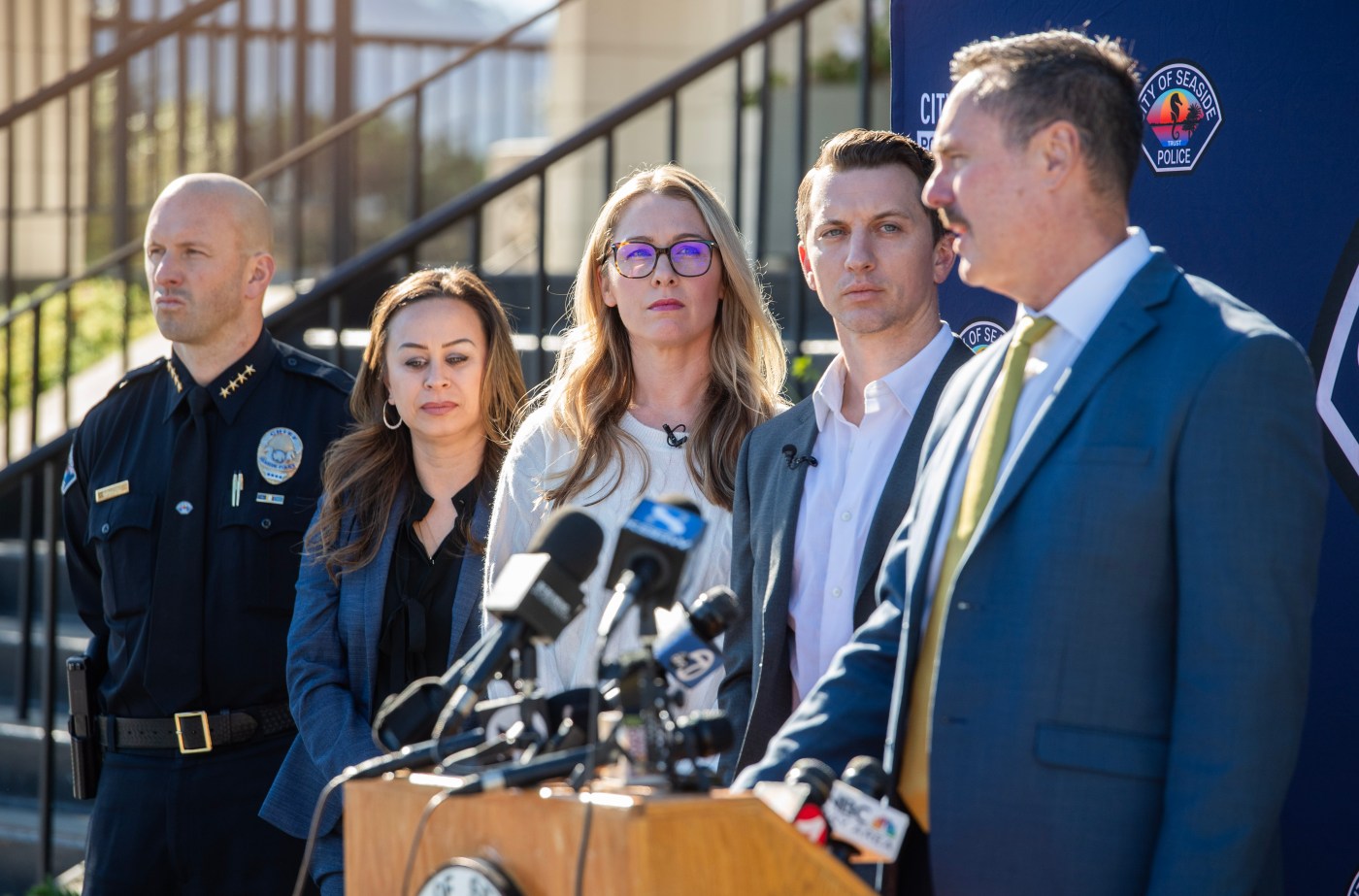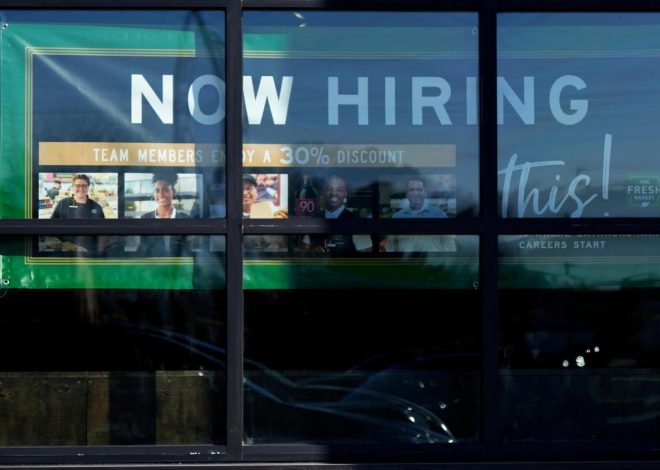
A decade-old ladder, a half-dozen letters and the story of how an ‘American Nightmare’ kidnapper allegedly came to Contra Costa County
Investigators say a newly-revealed kidnapping a decade ago in San Ramon was tied to the Vallejo man already convicted in another kidnapping and rape that happened just two weeks earlier — a case originally called a hoax by police — through dogged pursuit by the victims and other authorities.
The discovery of a key clue — a ladder used to plan the crime, still sitting in a ravine some 10 years later — helped break open the latest investigation into a number of home invasions, kidnappings and rapes believed to be tied to Matthew Muller, the imprisoned man whose 2015 kidnapping and rape of a Vallejo woman gained international infamy and became the subject of the Netflix documentary “American Nightmare.”
Matthew Daniel Muller (Dublin Police photo)
On Tuesday, El Dorado County District Attorney Vern Pierson said he now suspected that alleged crime spree dated back to 1993, when Muller was 16 years old and kidnapped and sexually assaulted his first victim. Muller is now believed to have committed at least six home invasions and kidnappings across Northern California — almost all of which were revealed in the last two weeks, including two in the South Bay and another in San Ramon.
The alleged 22-year crime spree only recently came into focus last year, when a Central California police chief began writing to Muller after having watched the Netflix series.
“He’s exceptionally intelligent, exceptionally educated and exceptionally well practiced in the art of sneaking into people’s houses and terrorizing them,” said Pierson. He added that Vallejo police had been using “pseudoscience” when they wrongly concluded that Aaron Quinn had killed Denise Huskins Quinn — an error that other police can avoid by using more modern, research-vetted interview methods, Pierson said.
Pierson said he now suspects Muller had been inside the couple’s home at least three times prior to the kidnapping “as part of his planning and preparation for what it was he was going to do.”
“That’s an opportunity that I hope all of us in law enforcement don’t miss — this is an opportunity to build from this,” said Seaside police chief Nick Borges, who helped break open the case.
Muller is currently serving concurrent 40- and 31-year state and federal prison sentences in the 2015 case.
On March 23, 2015, Muller broke into the home of Denise Huskins and her then-boyfriend, Aaron Quinn. Once there, he bound them with zip ties and blindfolds, then drugged them with a sleep-inducing substance.
Muller left Quinn behind, put Huskins into the trunk of Quinn’s car and drove her to a family home in South Lake Tahoe, located in El Dorado County. At the Tahoe residence, Muller twice raped Huskins and held her for two days before driving her to Huntington Beach in Southern California, where she was released.
When Huskins and Quinn reported the kidnapping to Vallejo police, authorities accused the two of making up the abduction. They reversed course only after Muller — a former Marine and Harvard-educated attorney — was arrested in June 2015 in connection with a separate home invasion in Dublin, where investigators recovered evidence from the Vallejo case, including a video of him assaulting Huskins.
The couple later sued the Vallejo Police Department for defamation and settled with them for $2.5 million.
Members of the press originally likened the case to the fictional book and film “Gone Girl,” which feature a staged kidnapping; on Tuesday, Pierson and Borges strongly disputed that characterization. More recently, the couple wrote a book about their ordeal and were profiled in the first season of the Netflix series, “American Nightmare,” released in January 2024.
Seaside’s police chief, Nick Borges — himself an avowed true crime buff — watched the series and quickly messaged the couple on Instagram, where he expressed support for them as well as his dismay at how Vallejo police had originally handled the case.
To Borges’ surprise, the couple messaged back and asked to talk. In March, Borges and the couple hosted a seminar in the Monterey County city of Seaside, where about 300 law enforcement officers were trained on how to better interview crime victims. Immediately afterward, the chief and the couple went to lunch, where Huskins Quinn said Borges pitched the unusual idea of him personally reaching out to Muller, asking if the imprisoned man would confirm the couple’s long-held suspicions that he had victimized far more people.
The couple quickly agreed — saying they were thinking of doing the same thing themselves.
Denise Huskins Quin answers questions next to her husband, Aaron Quinn, during a press conference announcing the filing of new felony crimes in Contra Costa and Santa Clara Counties against Matthew Muller in Seaside, Calif., on Tuesday, Jan. 7, 2025. Muller, who is serving a 40-year sentence in federal prison after being convicted in 2015 for the kidnapping and rape of Huskins, is an alleged suspect in several kidnappings, break-ins, and rapes in Santa Clara County and Contra Costa County. (Doug Duran/Bay Area News Group)
The media attend a press conference held by Seaside Police Chief Nick Borges, Alameda County Sheriff’s Lieutenant Misty Carausu, Denise Huskins Quin, Aaron Quinn, and El Dorado County District Attorney Vern Pierson announcing the filing of new felony crimes in Contra Costa and Santa Clara Counties against Matthew Muller in Seaside, Calif., on Tuesday, Jan. 7, 2025. Muller, who is serving a 40-year sentence in federal prison after being convicted in 2015 for the kidnapping and rape of Huskins, is an alleged suspect in several kidnappings, break-ins, and rapes in Santa Clara County and Contra Costa County. (Doug Duran/Bay Area News Group)
From left, Alameda County Sheriff’s Lieutenant Misty Carausu, Denise Huskins Quin, and her husband, Aaron Quinn, listen to El Dorado County District Attorney Vern Pierson during a press conference announcing the filing of new felony crimes in Contra Costa and Santa Clara Counties against Matthew Muller in Seaside, Calif., on Tuesday, Jan. 7, 2025. Muller, who is serving a 40-year sentence in federal prison after being convicted in 2015 for the kidnapping and rape of Huskins, is an alleged suspect in several kidnappings, break-ins, and rapes in Santa Clara County and Contra Costa County. (Doug Duran/Bay Area News Group)
Denise Huskins Quin and her husband, Aaron Quinn, exit a press conference announcing the filing of new felony crimes in Contra Costa and Santa Clara Counties against Matthew Muller in Seaside, Calif., on Tuesday, Jan. 7, 2025. Muller, who is serving a 40-year sentence in federal prison after being convicted in 2015 for the kidnapping and rape of Huskins, is an alleged suspect in several kidnappings, break-ins, and rapes in Santa Clara County and Contra Costa County. (Doug Duran/Bay Area News Group)
Seaside Police Chief Nick Borges answers questions during a press conference announcing the filing of new felony crimes in Contra Costa and Santa Clara Counties against Matthew Muller in Seaside, Calif., on Tuesday, Jan. 7, 2025. Muller, who is serving a 40-year sentence in federal prison after being convicted in 2015 for the kidnapping and rape of Denise Huskins Quin, is an alleged suspect in several kidnappings, break-ins, and rapes in Santa Clara County and Contra Costa County. (Doug Duran/Bay Area News Group)
El Dorado County District Attorney Vern Pierson looks at, from left, Seaside Police Chief Nick Borges, Alameda County Sheriff’s Lieutenant Misty Carausu, Denise Huskins Quin, and her husband, Aaron Quinn, during a press conference announcing the filing of new felony crimes in Contra Costa and Santa Clara Counties against Matthew Muller in Seaside, Calif., on Tuesday, Jan. 7, 2025. Muller, who is serving a 40-year sentence in federal prison after being convicted in 2015 for the kidnapping and rape of Huskins, is an alleged suspect in several kidnappings, break-ins, and rapes in Santa Clara County and Contra Costa County. (Doug Duran/Bay Area News Group)
Denise Huskins Quin wipes away a tear while answering questions next to her husband, Aaron Quinn, during a press conference announcing the filing of new felony crimes in Contra Costa and Santa Clara Counties against Matthew Muller in Seaside, Calif., on Tuesday, Jan. 7, 2025. Muller, who is serving a 40-year sentence in federal prison after being convicted in 2015 for the kidnapping and rape of Huskins, is an alleged suspect in several kidnappings, break-ins, and rapes in Santa Clara County and Contra Costa County. (Doug Duran/Bay Area News Group)
Denise Huskins Quin wipes away a tear while answering questions next to her husband, Aaron Quinn, during a press conference announcing the filing of new felony crimes in Contra Costa and Santa Clara Counties against Matthew Muller in Seaside, Calif., on Tuesday, Jan. 7, 2025. Muller, who is serving a 40-year sentence in federal prison after being convicted in 2015 for the kidnapping and rape of Huskins, is an alleged suspect in several kidnappings, break-ins, and rapes in Santa Clara County and Contra Costa County. (Doug Duran/Bay Area News Group)
Denise Huskins Quin answers questions next to her husband, Aaron Quinn, during a press conference announcing the filing of new felony crimes in Contra Costa and Santa Clara Counties against Matthew Muller in Seaside, Calif., on Tuesday, Jan. 7, 2025. Muller, who is serving a 40-year sentence in federal prison after being convicted in 2015 for the kidnapping and rape of Huskins, is an alleged suspect in several kidnappings, break-ins, and rapes in Santa Clara County and Contra Costa County. (Doug Duran/Bay Area News Group)
Muller wrote back within two or three weeks — suggesting that “he wanted to get this off his chest — he wanted to expose some of the poor law enforcement techniques; he wanted to do the right thing for justice for victims,” Borges said. The convicted man ultimately sent five or six letters back to Borges. By the second or third, Borges said, Muller had acknowledged his role in two unsolved South Bay home invasions that had bedeviled investigators for 15 years.
“I was bouncing around my office, to be honest,” said Borges, who recalled thinking that “if the facts are accurate in these cases, what he’s saying here, this is a confession.”
Muller also made a glancing reference to another kidnapping in San Ramon. The tips were substantial enough that Pierson and the FBI flew to the federal prison outside Tuscon, Ariz., where Muller had been held.
Over two days, Muller spoke about how his decades-long habit of kidnapping people dated to the age of 16, including a previously-unreported kidnapping out of San Ramon just two weeks after Muller victimized the Quinns. Officials did not offer more information about the alleged 1993 incident, citing the ongoing investigation.
In the San Ramon case, two men and a woman were allegedly held ransom by Muller, who demanded that one of them pay tens of thousands of dollars to win their release, according the Contra Costa County District Attorney’s Office. Once he got the money, Muller fled, the district attorney’s office said.
The three people — who remain anonymous — never reported the alleged crime, because they feared retaliation for doing so, said the DA’s office, which filed three new counts of kidnapping for ransom against Muller this week. No first court date has been announced for Muller, who was transferred last month from a federal prison in Arizona to a jail in Santa Clara County to face charges related to the alleged 2009 South Bay home invasions.
Investigators knew they had a case when Muller revealed a key detail: In 2015, he carried a ladder two miles to the San Ramon house, where he broke in while the occupants were away to plan the kidnapping. He later ditched the ladder in a nearby ravine — which a Contra Costa County sheriff’s deputy found in November 2024, once notified of the development by one of Pierson’s inspectors.
The couple said Tuesday that there are lessons that police can take from their experience to avoid other crime victims from feeling as “ostracized” as they did, and they voiced a willingness to work with police departments across the region on implementing more modern interviewing techniques.
Denise Huskins Quinn also shared concern at how Muller appears to have attacked the San Ramon household a mere two weeks after kidnapping and raping her — an encounter that Muller ended with profuse apologies and a vow that “seeing what this did to you has changed me; I’m done, I’m never doing this again.”
She recalled recently speaking to one of the women whose case recently came to light, during she told Huskins Quinn that “I didn’t know how much I needed this.”
“He had all the markers of a serial predator,” said Huskins Quinn, calling the delays in seeing the most recent cases come to light “frustrating.”
“I really believe this is just the tip of the iceberg,” she added.


